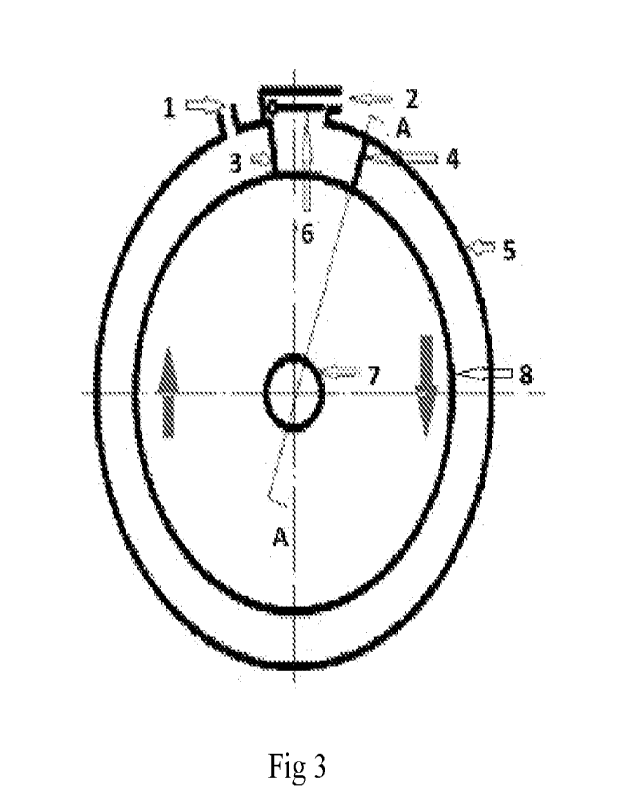Some of the information on this Web page has been provided by external sources. The Government of Canada is not responsible for the accuracy, reliability or currency of the information supplied by external sources. Users wishing to rely upon this information should consult directly with the source of the information. Content provided by external sources is not subject to official languages, privacy and accessibility requirements.
Any discrepancies in the text and image of the Claims and Abstract are due to differing posting times. Text of the Claims and Abstract are posted:
| (12) Patent Application: | (11) CA 3234075 |
|---|---|
| (54) English Title: | ROTARY ENGINE |
| (54) French Title: | MOTEUR ROTATIF |
| Status: | Compliant |
| (51) International Patent Classification (IPC): |
|
|---|---|
| (72) Inventors : |
|
| (73) Owners : |
|
| (71) Applicants : |
|
| (74) Agent: | BRUNET & CO. |
| (74) Associate agent: | |
| (45) Issued: | |
| (86) PCT Filing Date: | 2021-10-15 |
| (87) Open to Public Inspection: | 2023-04-20 |
| Availability of licence: | N/A |
| (25) Language of filing: | English |
| Patent Cooperation Treaty (PCT): | Yes |
|---|---|
| (86) PCT Filing Number: | PCT/IB2021/000523 |
| (87) International Publication Number: | WO2023/062398 |
| (85) National Entry: | 2024-04-05 |
| (30) Application Priority Data: | None |
|---|
Rotary engine involves at least one power output unit which comprises an outlet (1), inlet (2), throat (3), piston (4), engine body (5), shutter (6), shaft (7), rotator (8), the rotator (8) is firmly connected to engine output shaft (7), the rotator (8) is fine matched to the engine body (5), and fine sealed, the piston (4) is fastened to the rotator (8) and fine matched to the engine body (5) and fine sealed, the piston (4) divides working chamber with the outlet (1) and drives the rotator (8), the shutter (6) is driven by timer belt which is driven by the shaft (7) in turn to make sure the exact open/close time, when the shutter (6) is at the rest position, the piston (4) can go through the throat (3) to finish 1 cycle and start next cycle, when the shutter (6) is at the throat position, the shutter (6) works with the engine body (5), the rotator (8), and the piston (4) to form a sealed working chamber.
Le moteur rotatif comprend au moins une unité de sortie de puissance qui comprend une sortie (1), une entrée (2), gorge (3), un piston (4), un corps de moteur (5), un obturateur (6), un arbre (7), un rotateur (8), le rotateur (8) est fermement relié à l'arbre de sortie de moteur (7), le rotateur (8) est mis en correspondance fine avec le corps de moteur (5) et de manière étanche fine, le piston (4) est fixé au rotateur (8) et mis en correspondance fine avec le corps de moteur (5) et de manière étanche fine, le piston (4) divise la chambre de travail avec la sortie (1) et entraîne le rotateur (8), l'obturateur (6) est entraîné par une courroie de minuterie qui est entraînée par l'arbre (7) à son tour pour assurer le temps d'ouverture/fermeture exact, lorsque l'obturateur (6) est en position de repos, le piston (4) peut passer à travers la gorge (3) pour terminer 1 cycle et démarrer le cycle suivant, lorsque l'obturateur (6) se trouve en position de gorge, l'obturateur (6) fonctionne avec le corps de moteur (5), le rotateur (8) et le piston (4) pour former une chambre de travail étanche.
Note: Claims are shown in the official language in which they were submitted.
Note: Descriptions are shown in the official language in which they were submitted.

For a clearer understanding of the status of the application/patent presented on this page, the site Disclaimer , as well as the definitions for Patent , Administrative Status , Maintenance Fee and Payment History should be consulted.
| Title | Date |
|---|---|
| Forecasted Issue Date | Unavailable |
| (86) PCT Filing Date | 2021-10-15 |
| (87) PCT Publication Date | 2023-04-20 |
| (85) National Entry | 2024-04-05 |
There is no abandonment history.
Last Payment of $50.00 was received on 2024-04-05
Upcoming maintenance fee amounts
| Description | Date | Amount |
|---|---|---|
| Next Payment if small entity fee | 2024-10-15 | $50.00 |
| Next Payment if standard fee | 2024-10-15 | $125.00 |
Note : If the full payment has not been received on or before the date indicated, a further fee may be required which may be one of the following
Patent fees are adjusted on the 1st of January every year. The amounts above are the current amounts if received by December 31 of the current year.
Please refer to the CIPO
Patent Fees
web page to see all current fee amounts.
| Fee Type | Anniversary Year | Due Date | Amount Paid | Paid Date |
|---|---|---|---|---|
| Application Fee | $225.00 | 2024-04-05 | ||
| Maintenance Fee - Application - New Act | 2 | 2023-10-16 | $50.00 | 2024-04-05 |
Note: Records showing the ownership history in alphabetical order.
| Current Owners on Record |
|---|
| LI, LIANGUI |
| Past Owners on Record |
|---|
| None |